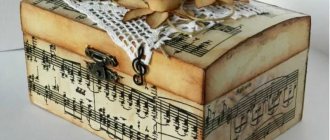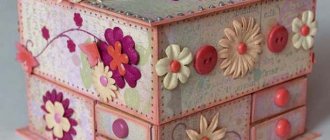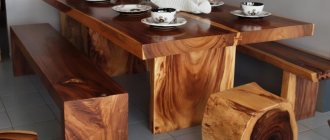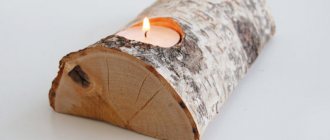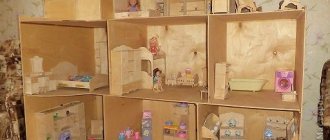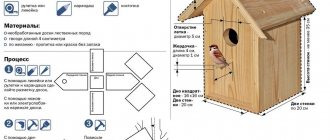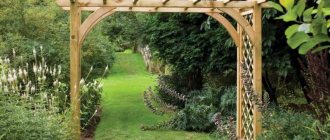Decorating a yard, garden or cottage is a fascinating and time-consuming task, and also requires decent material costs. To save money, you can do many things to decorate your garden/plot yourself. This time we will talk about how to make outdoor flowerpots. Let's take a closer look at the manufacturing process from two materials - wood and concrete. These are the most flexible and inexpensive materials from which very good things can be made.
An abundance of flowers will decorate any landscape or home
Vase “Golden Autumn”
For this craft, you will need a small glass jar of a shape you like. You need double-sided tape, paper, pencil, scissors, and a piece of foam rubber. An important component will be matte and transparent paint for stained glass, a gold outline on the glass and melange threads like “Iris”. By strictly following the recommendations of the master class, the result will exceed all expectations.
- According to the name of the product, draw various leaves on paper.
- Place decorative elements on tape and cut them out.
- We place the cut-out decor over the entire surface of the jar and, using foam rubber, cover it, as well as the bottom, with a continuous layer of stained glass paint. Choose the tone to your liking.
- After the paint has dried thoroughly, remove the glued elements. In front of you will be a painted plain base of a vase with transparent curly leaf windows.
- Carefully outline all the edges with a gold outline for glass; some parts of the design can be completed on the jar itself (leaf stalk).
- We paint the “glass” leaves with transparent stained glass paint in autumn tones. Draw veins on the dried leaves using an outline.
- Finally, decorate the top of the vase (neck of the jar) and the bend at the base with melange threads, carefully laying them in even and tight turns. Make the rows small in width.
Select the melange according to the color scheme of the finished product.
You can make four vases by analogy, but in a spring, summer and winter direction. At any time of the year you will have a new decorative element in your interior.
Preparing your desktop
First of all, you need to prepare your table on which you will work. There should be no unnecessary things on it and every tool should be at hand. Not everyone has their own desktop and has probably already thought about creating one. Making a table is not difficult, but choosing a place for it in the house is difficult. The ideal option is an insulated balcony, on which you can do crafts at any time. I have already written about preparing the table in a separate article and tried to describe in as much detail as possible the entire process of creating it. If you don’t know how to prepare your workplace, then read the following Article. After you have completed the process of creating a table, try to start choosing your future craft.
Spectacular vase
It is quite simple to make an original design from a narrow, tall bottle and at minimal cost. Prepare everything you need: a glass container of your choice, white acrylic paint, painting tape, acrylic varnish, scissors, a brush (you can use a kitchen sponge).
Pay special attention to such a moment as degreasing the bottle, otherwise the paint will not lie evenly on the glass. The masking tape should be cut into strips of various sizes (the width and length are determined at your discretion).
Glue it in the way the design will look like (for example, geometric patterns), glue a thinner strip near the neck, or, alternatively, glue the neck completely (it will remain unpainted).
Choose the patterns you like - you can cut out different figures of flowers and stars from the ribbon.
The entire surface is covered with paint. When painting, hold the bottle by the neck. After drying, paint over it too. Carry out the procedure several times, making sure that there are no gaps left. Remove the stencils from the masking tape from the thoroughly dried product and cover the vase with acrylic varnish in several layers. A beautiful, shiny flower vase is ready.
Ikebana will look amazing in it.
Direct drive or belt drive
There are several ways to convey the rotation of a part. The simplest is direct drive. In this case, the workpiece is fixed directly on the motor shaft. The distinctive feature of this design is its simplicity. However, direct drive has a number of significant disadvantages.
Firstly, a direct drive machine does not allow you to adjust the speed, which is very important when working with hard material. It is also worth considering the load on the electric motor, especially when working with large workpieces
Since it is centered, vibration cannot be avoided. Motor bearings are not designed for longitudinal loads and often fail.
To protect the motor from damage and make it possible to regulate the speed of rotation of the workpiece, it is worth considering a belt drive. In this case, the motor is located away from the axis of rotation of the workpiece and the torque is transmitted through pulleys. Using pulleys of different diameters, it is easy to change the speed over a fairly wide range.
It is recommended to equip a home machine with pulleys of three or more strands, which will allow you to process wood of any species with equal success, and, if necessary, work with soft alloys.
Plaster vase
One of the most malleable materials, gypsum is a good material for making original vases. They will become a stylish interior decoration, made with your own hands. There are a lot of techniques for creating crafts from plaster.
A master class is offered, where a two-liter plastic bottle is taken as a template. Cover the surface on which you will create with oilcloth. Stir the gypsum mixture with added water to the desired consistency and place the solution on a flat surface in the shape of a circle.
Place the bottle in the center. Apply the solution to the template up to the narrowing area and wrap it carefully with a bandage. Let the mixture dry (this will take no more than half an hour). Carefully remove the container and begin to form the base of the vase.
To do this, prepare another portion of the solution, apply several layers, each time wrapping it with a bandage. Then proceed to forming the upper part of the product. A 1.5-liter plastic bottle needs to be cut so that its height is one third of the main template.
Align the blank with the bottom of the vase and apply the solution, alternating with layers of gauze. Coat the joint of the two parts well with the solution in several layers. Having achieved the characteristic shape of the product, leave it in a warm place for a day until it dries completely. Thoroughly clean the dried form with sandpaper and begin decorating. At this stage, everything depends on your preferences, tastes, fantasies.
Artistic painting, simple painting with acrylic paints followed by coating with acrylic varnish, sticking a favorite photo or creating a 3D blend will do. The caveat of this craft is that it cannot be filled with water. Its main purpose is decorative decoration; you can arrange a beautiful composition of dried flowers or branches, ears of corn and other natural material in it.
Types of turning and principle of operation
There are more than a dozen different types of turning work, and they differ from each other in the types of parts and their sizes. Consequently, there can be many types of turning. But there are three main methods on which all others are based: longitudinal, transverse and angular. They differ in the direction of movement of the cutter relative to the axis of rotation of the workpiece:
- longitudinal – the cutter moves parallel to the axis of rotation;
- transverse - the cutter moves perpendicular to the axis of rotation;
- angular (tangential) – the cutter moves at an arbitrary angle to the axis of rotation.
What method to use is decided by the master, based on the goals that he faces.
Vase made from a wooden block
We cut part of the tree in such a way as to achieve the desired height of the finished product. You can remove the bark, or you can leave it as is. We make the hole using an electric drill. In this situation, a man will be a good assistant.
The hole must not be through. We carefully sand the inner surface with sandpaper. At your discretion, treat the front part of the vase with stain, or leave it in its natural state. Place a bottle of suitable size inside, pour water, place flowers. You can decorate your garden plot with such flowerpots. Floor vases made from a wooden block will look beautiful in a country house.
The range of vases is huge - in shapes, sizes, volumes. Various materials are used in their production. The pride of the housewife will be a vase of her own individual production, especially if the whole family takes part in its creation.
Selecting wood for turning
Before you start turning your planned product, you need to do some preparatory work: select a suitable material and dry it.
Dense, fine-grained wood species are best suited for turning work. It is desirable that the material does not have defects: cracks, falling knots, tar and sprouts. But curling and cross-layering, usually considered defects, are not problems when turning. On the contrary, due to the fact that twisted wood is difficult to split, it is often used to make mallets and handles.
Almost all types of wood are suitable for turning, but birch, alder, beech, maple, walnut, pear, linden and hornbeam behave best when processed, but pine, oak, spruce and ash are a little worse. Pear and apple trees are ideal for turning, especially wild species. The wood of these trees is easy to process and polishes well. The paint adheres well to it.
Original craft
Try creating a vase from a material such as cardboard, which will become a wonderful stylish item in the interior.
Gather the components needed for work:
- a cardboard pipe of certain parameters can be purchased at a hardware store;
- stationery knife, glue, newsprint;
- paint and varnish used as a fixative.
Make a bottom for the prepared pipe - cut out a circle with a diameter that matches the diameter of the pipe and glue it to it. The vase frame is ready. Making paper decorations is a rather labor-intensive process. Fold the cut newspaper strips in half and then roll them into small rolls, gluing the ends together.
Prepare a sufficient number of such parts. Cover the surface of the cardboard tube-vase with them. Please note that they need to be placed very close to each other. However, there will still be gaps that can be filled with any available material - small buttons, beads, types of pasta, beans (white or red).
It is advisable to paint the product with gouache, not very diluted with water, or with aerosol paint, carefully painting the paper flower rolls. Leave the product for a while to dry. Decorate according to your taste.
The simplest items can become the highlight of your home's interior. When thinking about creating a vase with your own hands, you need to carefully analyze the style of the interior so that your work emphasizes its originality. Let's look at some of them and listen to the advice of designers.
The laconic, discreet shape of the vase, its discreet colors and neat finish are perfect for the minimalist style. Classicism presupposes symmetry in ornaments of light colors. A variety of materials are used to create a vase with your own hands, suitable for the high-tech style. Metal, plastic, glass or wood are used. Vases, the design of which combines literally everything (even the seemingly incompatible) look interesting in the extravagant kitsch style.
Preference in decoration is given to spectacular rich colors and original decor. Art Nouveau is characterized by abstraction, smooth lines and decoration using decoupage. To create a vase that suits the avant-garde style, you need a rich imagination, as well as extremely rich colors and elegant patterns.
An individual vase in your own design will become a unique addition to the design, tell about the taste of the owners, and delight the guests. This item will be a great gift for birthdays, New Years and other holidays. Make crafts - vases, give yourself and those around you beauty and a good mood.
DIY - How to make a TRIDENT from A4 paper with your own hands?
Instructions on how to make a trident from A4 paper. Required materials: 11 sheets of A4 paper, glue, scissors. Approximate time to create 1 paper craft: twenty-six minutes. Reference: A trident is a bladed weapon consisting of a single shaft and a tip of three sharp teeth. It was often used in close combat as a piercing weapon, and thanks to its design, it could easily disarm your enemy. It was especially widely used during the Roman Empire in gladiator battles. They were worn by retiarii, this is a special type of gladiator warrior, literally translated, it sounds like “a fighter with a net”, their weapons consisted of a trident and a net, their armor consisted of one shoulder pad that covered the shoulder or the left side of the chest. gladiator The tactics of the retiarii was to throw their net at the enemy, if he was lucky enough to do this, then he would attack him with his trident. In Greco-Roman culture, it was a symbol of lightning, and was the weapon of the most important Greek god Zeus (Jupiter). Also, the trident is a symbol of power over the seas and oceans and the entire water element. It was a permanent personal attribute of the ancient Greek god Poseidon (Neptune). In Christianity, the trident is a symbol of the Trinity. But it has gained fame as a satanic weapon; it is with it that the devils torment sinners in hell. In Hinduism, it is already a weapon of the Hindu god Shiva; it was often depicted as a mark on the foreheads of his followers. In other cultures• It is a sign of the Maserati company.• It was a personal sign (tamga) of the great Genghis Khan. • The trident is a symbol of the princes of the times of Kievan Rus. Today, the Trident is the coat of arms of Ukraine.• Also depicted on the flag of the Crimean Tatars and Barbados. ——————Weapons made of paper: https://www.youtube.com/playlist?list... Subscribe to the YouTube channel “Origami and crafts from A4 paper”: https://www.youtube.com/channel/UCQRY ... Link to this video: https://www.youtube.com/watch?v=FzTWh... And most importantly, remember that every origami you make with your own hands ennobles you a little, and the folding process itself teaches attentiveness and patience. Thank you for watching our DIY video. Just don’t forget to rate this video about a paper trident later!))) The composition “BTS Prolog” belongs to the performer Kevin MacLeod. License: Creative Commons Attribution (https://creativecommons.org/licenses/…).Original version: https://freepd.com/Unclassified/BTS%20….Artist: https://incompetech.com/Composition “Faceoff” » belongs to the artist Kevin MacLeod. License: Creative Commons Attribution (https://creativecommons.org/licenses/…).Original version: https://incompetech.com/music/royalty-….Artist: https://incompetech.com/
Read also: How to solder aluminum wires at home
We choose quality material
The main material is plywood. The choice is always difficult. Each of us has probably encountered such a problem as delamination of plywood from the end part and asked the question, what causes this delamination? Well, of course, this is mainly due to low-quality plywood. If this is not the first time you have picked up a jigsaw, then you can select plywood from the remnants of a previous craft. If you are new to sawing and you don’t have plywood, then buy it at a hardware store. Choosing material for sawing is always difficult. You should always choose plywood carefully, often look at the defects of the wood (knots, cracks) and draw conclusions. The difficulty in choosing plywood lies in the fact that no matter how you guess at its defects and shelf life. For example, you bought plywood, cleaned it, translated the drawing and suddenly it began to delaminate. Of course, this has happened to almost everyone and it’s oh, how unpleasant. So it is better to pay attention when choosing and choose good plywood. I wrote a special Article in which all the principles of choosing plywood are described step by step.
Stripping plywood
We clean our plywood with sandpaper. As you already know, “Medium-grained” and “Fine-grained” sandpaper is used for cleaning plywood when sawing. You've probably seen sandpaper in hardware stores, and that's what we'll need. In your work you will need “Coarse-grained”, “Medium-grained” and “Fine-grained” sandpaper. Each of them has its own property, but a completely different coating, by which it is classified. “Coarse-grained” sandpaper is used for processing rough plywood, i.e. which has many defects, chips, and cracks. “Medium-grained” sandpaper is used for processing plywood after “Coarse” sandpaper and has a slight coating. “Fine-grained” or otherwise “Nulevka”. This sandpaper serves as the final process for stripping plywood. It gives the plywood smoothness, and therefore the plywood will be pleasant to the touch. Sand the prepared plywood in stages, starting with medium-grain sandpaper and ending with fine sandpaper. Sanding should be done along the layers, not across. A well-polished surface should be flat, completely smooth, glossy in the light and silky to the touch. How best to prepare plywood for sawing and which sandpaper is best to choose Read here. After stripping, check the plywood for burrs and small irregularities. If there are no visible defects, then you can proceed to the process of translating the drawing.

